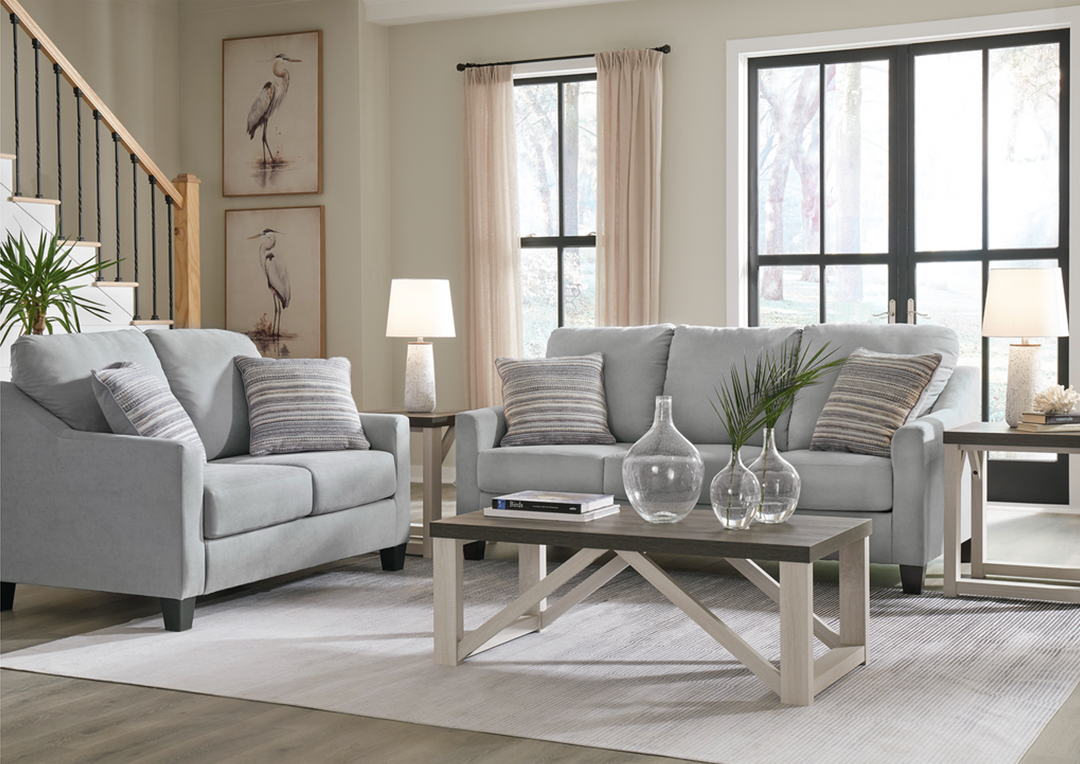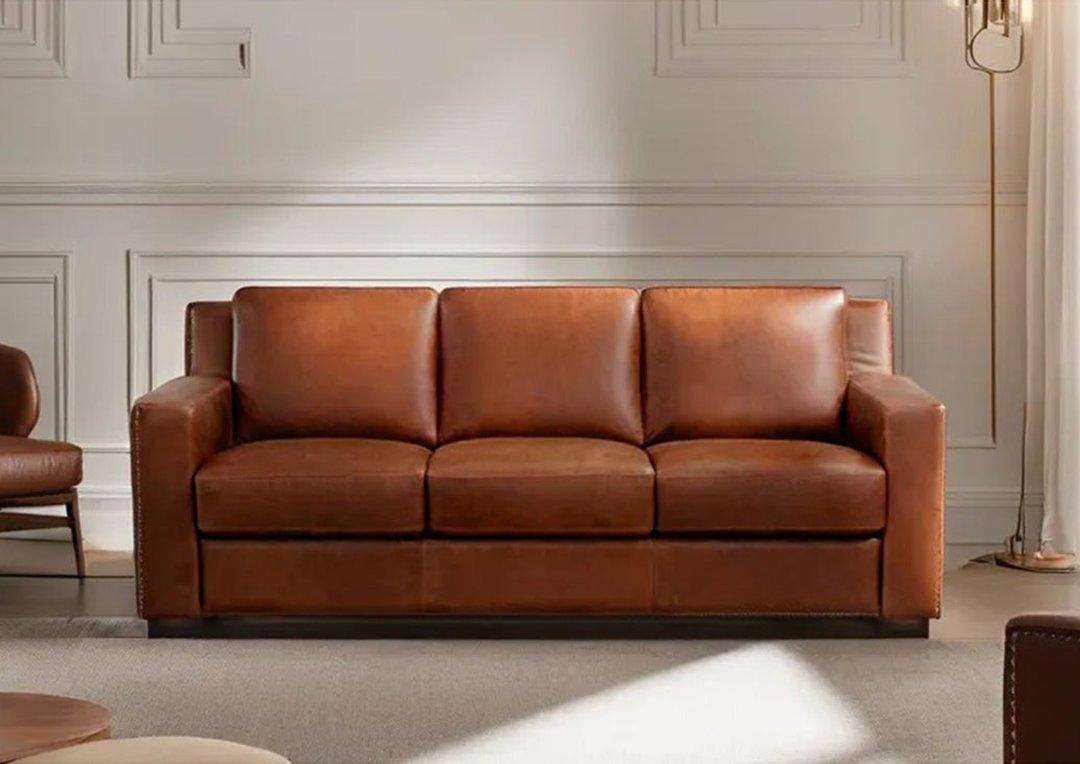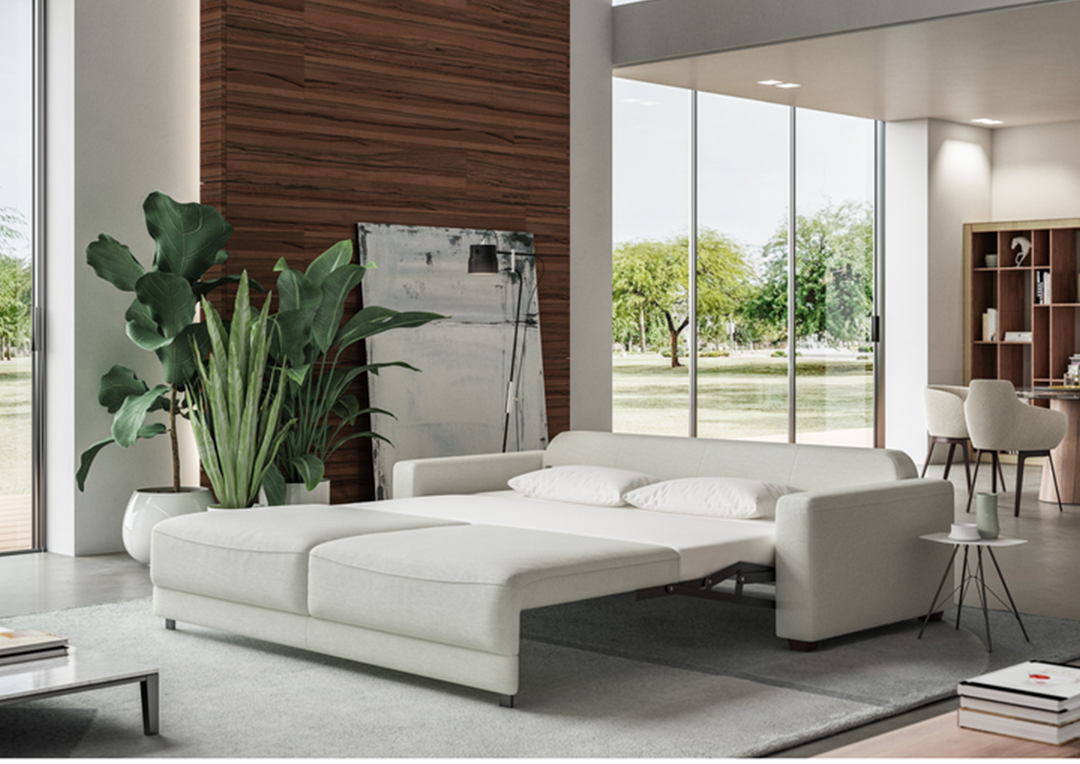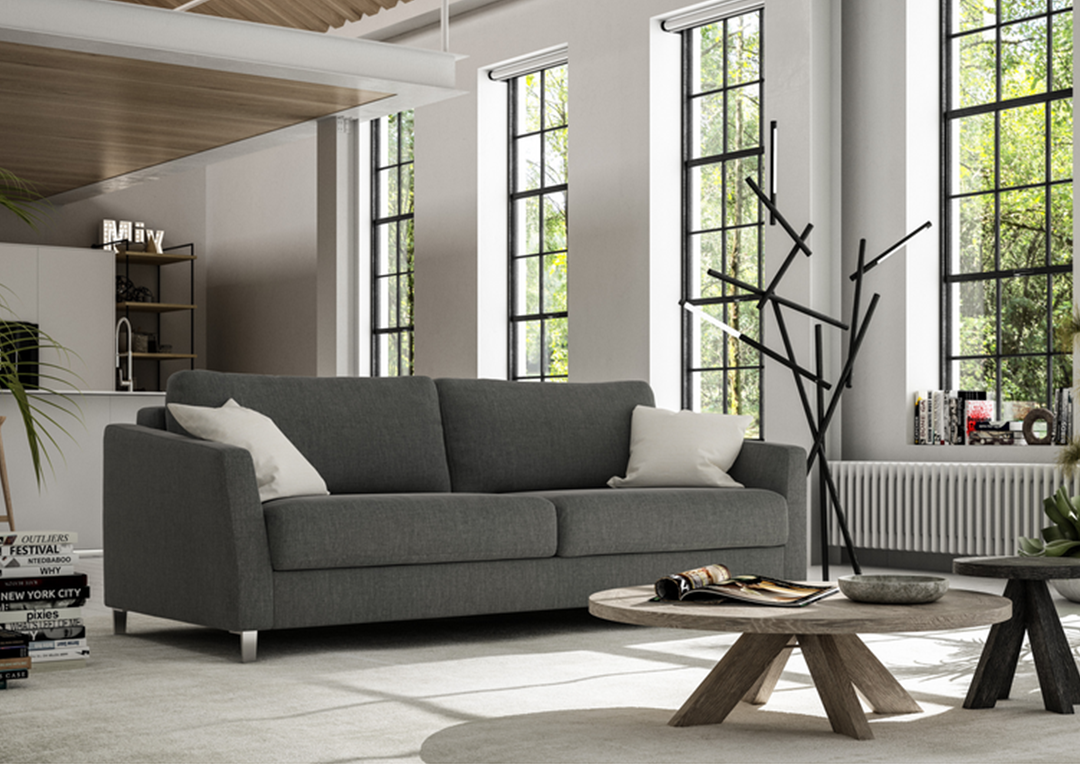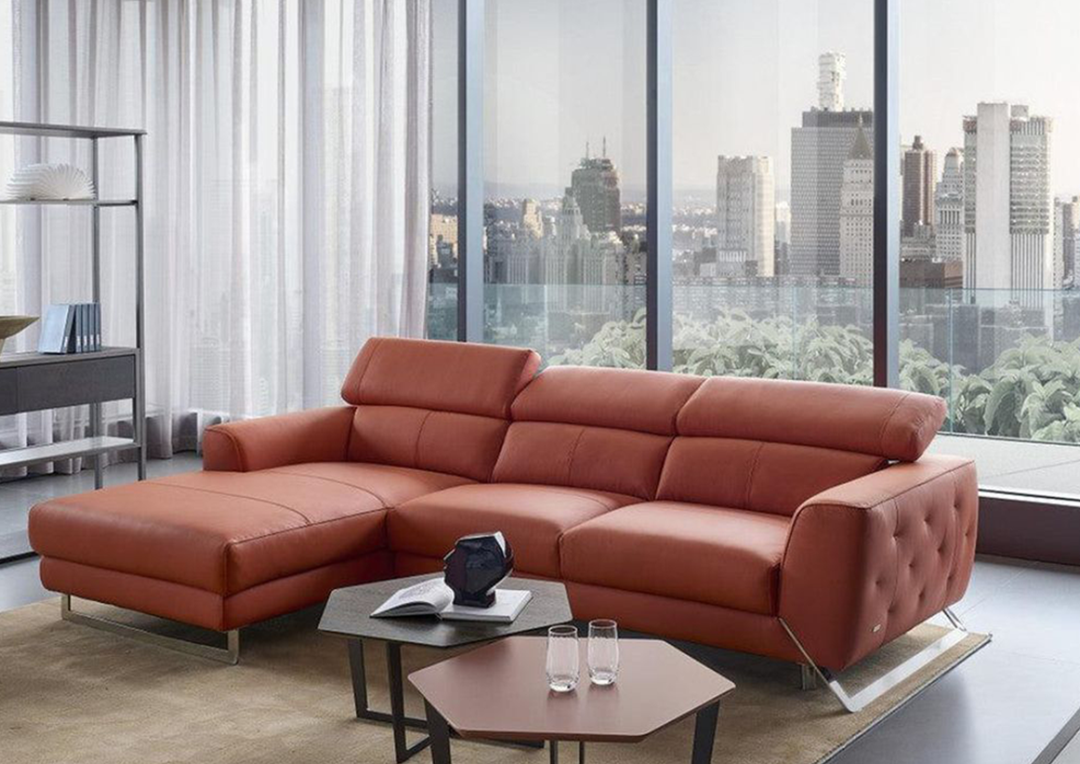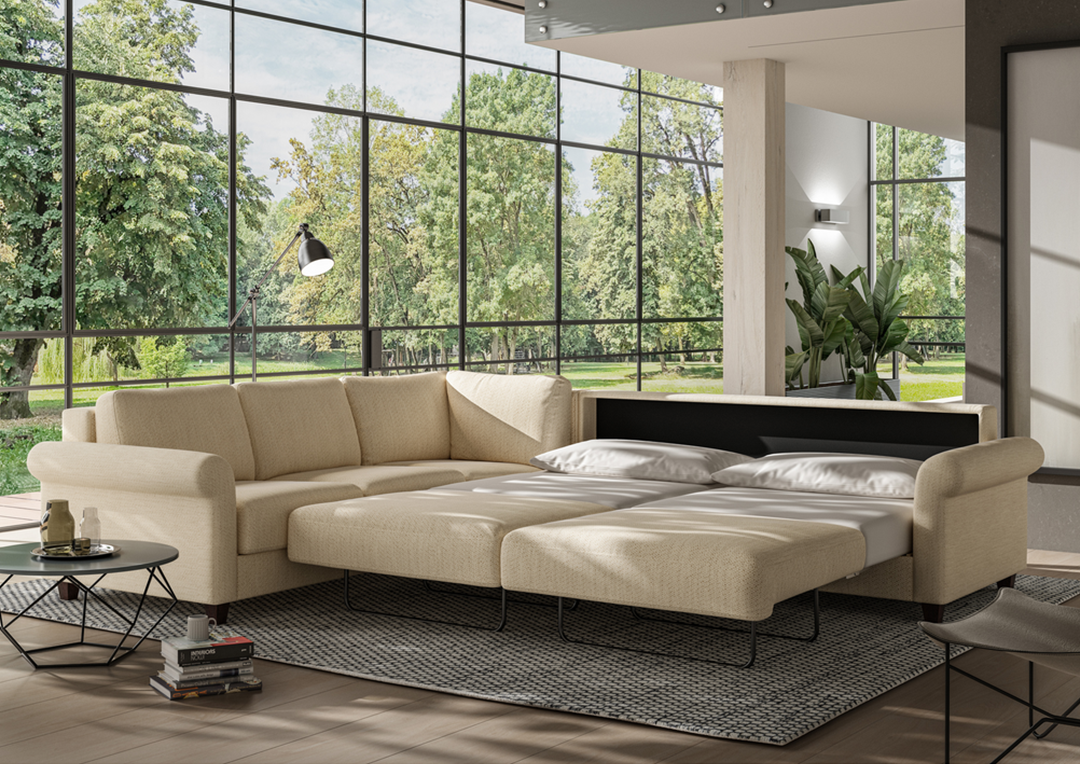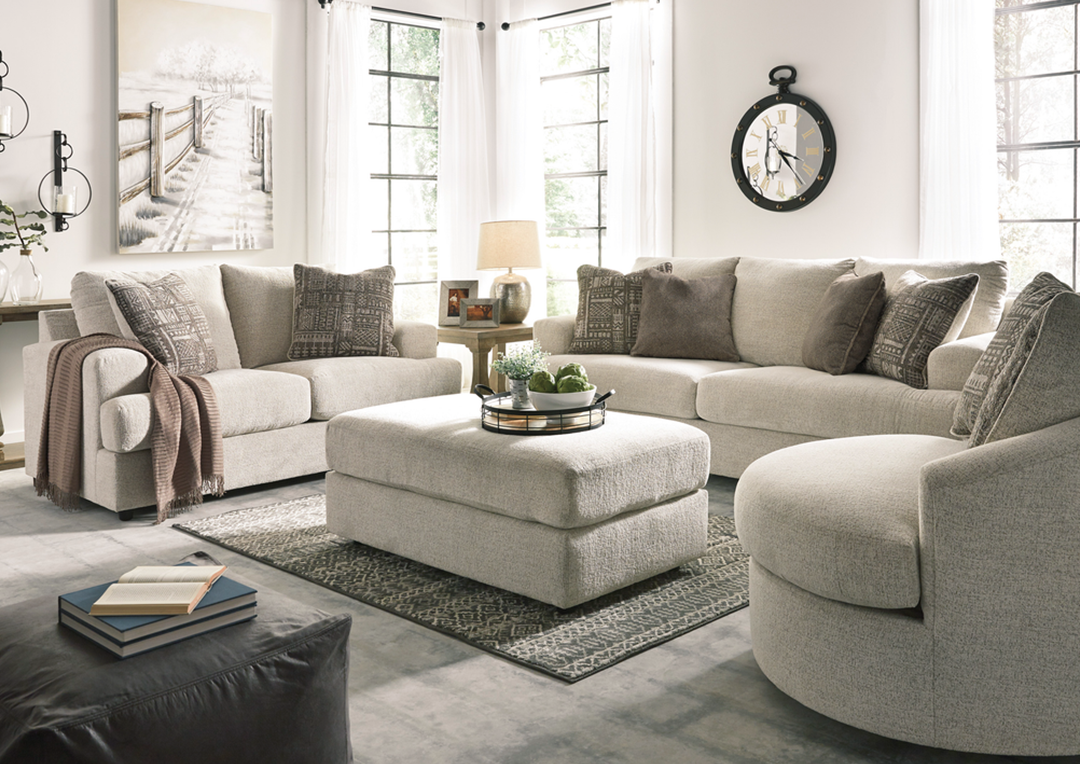Leather vs. Fabric Recliners: Which Is Better for Everyday Use?

TABLE OF CONTENTS
- Leather Recliners Pros and Cons
- Fabric Recliners Pros and Cons
- Key Considerations for Everyday Use of Recliners
- Final Verdict: Which One Is Better For Everyday Use?
While sofas and loveseats are the basic seating options, many forget or overlook how beautiful, powerful, and comfortable a recliner could be. But yet the recliners have a decent fan following for the comfort they provide.
But when it comes time to pick the perfect recliner, one question always seems to trip people up. Leather or fabric.
It's not about the matter of looks. If so, many would have gone with leather for its classy look and fabric for its comfy texture and amazing colors. But people want to know if the reclining chair fits into your lifestyle, budget, home environment, and even your cleaning habits.
So, which one actually makes more sense for everyday use?
This article is here to walk you through the pros and cons of leather and fabric recliners.
Leather Recliners Pros and Cons
When it comes to recliners, leather models often get the top billing, and it's for a good reason. They have a polished look and are durable enough to last a long time.
But don't let the shine fool you. Because leather recliners also come with both perks and pitfalls. Let's take a look at them now.
Pros of Leather Recliners
-
Durability And Longevity
Real leather, which is the top grain and full grain leather, gets better with time. A good leather recliner can easily last you 10 to 20 years or more if it's treated right. Unlike fabric, which can start to look tired after years of daily use, leather develops a rich patina.
-
Elegant And Luxurious Appearance
Let's be honest for a second, leather brings a certain richness to a room that fabric often can't touch. It fits the bill, is timeless and versatile, and has a way of making even a cluttered space feel put-together.
-
Stain-Resistant And Easy To Wipe And Clean
If you spill any liquid item, you need not panic. Unlike fabric, which tends to soak things up like a sponge, leather is more forgiving. Most spills bead up on the surface and give you some cushion time to grab a cloth and clean up. This is true especially for top-grain or full-grain leather because it has a natural protective finish. But again, other types also withstand it, considering it has a protective coat added to it.
This is why a simple wipe-down using a damp cloth usually does the trick. No need for vacuum attachments or fancy upholstery cleaners.
Cons Of Leather Recliner Sofas
-
Can Be Expensive
Without beating around the bush, we can say that good leather ain't cheap. Genuine leather recliners can cost hundreds to thousands more than their fabric counterparts. Plus, you aren't just paying for the material; recliners in general aren't cheap. While it might feel like a punch to the wallet, trust us that they are worth the price tag if you are in it for the long haul.
-
Scratches Easily, Especially With Pets
If you have a cat that's going to think your recliner is a scratching post or a dog that likes to leap before it looks, leather might not be your best bet.
Fabric Recliners Pros and Cons
Fabric recliners may not have the same swag as their leather recliners, but don’t count them out just yet. Fabric is that chill, cozy furniture that is approachable, practical, and promises just plain comfort. Let’s learn about what makes them tick, and where they might fall short.
Pros Of Fabric Recliners
-
Affordable Options
If you are watching your budget, fabric recliners are often much easier on the wallet, which means you can quickly grab a comfortable, good-looking model.
-
Wide Variety Of Colors & Patterns
While leather tends to stick to the same handful of shades, fabric lets you go wild. For example, if you want a navy blue recliner with floral patterns, check. Need something that matches your burnt orange accent wall? Check.
-
Softer And Cozier Feel
There’s no two ways about it, fabric just feels cozier than leather material, and everyone agrees on it. Sitting in a plush fabric recliner is like being wrapped in a warm hug, and you will love it.
-
More Breathable Material
Unlike leather, which tends to trap heat and moisture, fabric breathes. That means less sticking, less sweating, and overall better comfort during long lounging sessions.
Cons Of Fabric Recliner
-
Stains Easily And Is Harder To Clean.
One clumsy moment with a glass of red wine or a cup of coffee can simply create a memory forever on the recliner. And unless your recliner has been treated with a stain-resistant coating, that stain is going to show up. Overall, the cleaning of the fabric isn't as simple as grabbing a wet cloth and giving it a simple wipe.
-
Absorbs Odors
Got pets? Do you smoke? Or love to eat food sitting on your fabric recliners, this material can easily hold onto smells. Unlike leather, which can be wiped clean, fabric requires more effort to keep it smelling fresh.
-
May Wear Out Faster
Even the best fabric tends to show its age eventually. Especially, the high-traffic spots like the armrests and seat cushions can get worn down over time.
Key Considerations for Everyday Use of Recliners
Choosing between a leather and fabric recliner isn't just about looks or price tags. It's about how you live day to day with this particular furniture.
Because what works beautifully in a showroom might fall flat in a real home with real messes, real kids, and real life. So before you swipe your card or hit, add to cart, check the following things:
1. How is your household composition?

Do you have pets, kids, or have a habit of eating food sitting on a recliner? Then you have to seriously think about your choice.
-
Pets: This is because if you have furry friends who often shed or love to scratch, leather doesn't trap pet hair. But fabric is more forgiving with claws and jumping paws.
-
Kids: Or if you have little ones who tend to spill, smear, and snack everywhere, leather can be a lifesaver because it wipes clean and resists stains. Fabric may feel softer and warmer to sit on.
-
Allergies: Leather wins again here. It doesn't harbor dust mites, pollen, or pet dander the way fabric can. If anyone in your home has asthma or allergies, a leather recliner might actually help keep the air a little cleaner.
2. Climate and Temperature

Where you live can totally affect the leather material. If you are in a hot and humid place, leather can slightly get sticky or sweaty if you don't have great air conditioning. Fabric, being more breathable, stays cooler and doesn't glue itself to your skin.
3. Usage Frequency

If it's occasional use, leather could be a great choice. It holds its shape well and won't wear down fast.
But if you are the type who lives in your recliner, fabric might feel better for long-term lounging. It's softer on the skin, less temperature reactive, and usually a bit more forgiving when you are practically living in it.
4. Cleaning and Maintenance Preferences

Are you the type who loves to dive into a deep cleaning furniture routine, or do you prefer a wipe and forget routine?
Leather is easy-peasy for surface messes. A damp cloth is usually all you need for everyday spills and dust. But it does expect you to condition it a couple of times a year to avoid breaking or drying out.
Fabric needs to be vacuumed regularly, spot cleaned with upholstery cleaners, and may even be steam cleaned occasionally, especially if you are dealing with spills, pets, or odors. Some newer "performance fabrics" are more stain-resistant, but generally speaking, fabric takes more effort to keep fresh.
5. Style and Home Decor

Last but definitely not least: how does it look in your space?
Leather tends to lean more toward sleek, modern aesthetics. It pairs well with industrial, minimalist, or classic wood-heavy interiors. But it can feel cold or too formal in ultra-cozy spaces.
Fabric comes with different textures, colors, patterns, or even bold prints to match your vibe. So, there is a fabric recliner that will fit in any style or decor.
6. Cost Comparison

No matter how comfy a recliner is, if it breaks the bank, it better be made of gold, i.e., top-end quality.
Leather recliners: A quality real leather upholstered recliner can cost 2x to 3x more than a fabric one. But, and this is a big but, leather tends to outlast most fabric models. So, you are saving yourself from replacing it down the line.
Fabric recliners: Picking a stylish, comfy fabric recliner in your favorite color is super easy. You just have to spend a few hundred bucks, and you are already making a great choice if you are furnishing on a budget.
Stuck in between the two? Pick either faux leather or performance fabrics.
If you are stuck in the middle, which means wanting the look of leather without the price tag, or the feel of fabric without the headaches, there are some solid middle-ground choices.
-
Faux leather, also known as PU leather or bonded leather, gives you the leather look for less. It’s easier to maintain than fabric and more affordable than real leather, but it’s not as durable. Cracking and peeling are common after a few years of use.
-
Performance fabrics like polyester blends, microfiber, or stain-resistant weaves are engineered for real life. They are great for families, pet owners, or anyone who wants a soft texture without worrying too much about cleaning.
7. Durability and Longevity

You buy a recliner, and that starts sagging like an old mattress after a couple of years, literally questioning your investment.
So, you should also know how leather and fabric stack up over time.
Leather recliners: Top-grain and full-grain leather are built to last. With proper care, they can easily go strong for 15 to 20 years, even longer in some cases.
Fabric recliners: This one has a shorter shelf life, which means it can last up to 7 to 10 years, depending on use, fabric quality, and frame construction.
So, if you are looking for a recliner that can sustain the long haul, leather usually has the upper hand, but performance fabrics are starting to close the gap.
8. Comfort & feel

This is where things get personal. Everyone has their definition of comfort. So, here's how leather and fabric compare:
Cushion support and adjustability: Both types come in a variety of cushion densities and reclining mechanisms, from manual levers to full-blown power recliners with USB ports. So, this part really depends more on the model than the material.
Softness and skin feel: Fabric is the clear winner if you are all about cozy. It doesn't stick to your skin, and it always feels warm and inviting. Leather can be a bit trickier as it feels sleek and smooth, but also cool to the touch at first.
Prolonged sitting: This is again your call. But again, we can say that for longer lounging, fabric tends to be more breathable and cushier over time.
Leather might be better for posture support if you like something a little firmer and structured.
Final Verdict: Which One Is Better For Everyday Use?
We have laid all the cards on the table. We have considered everything from spills and stains to softness and style, price to maintenance. So now comes the big question: Which recliner material actually fits your life? Truth is, we can't just point out and give a straight answer. The best choice depends on how you live, who you live with, and what you care about most: comfort, looks, maintenance, or cost.
-
For families with kids or pets, go with performance fabric, faux leather, or real leather if the budget allows.
-
For seniors, fabric is the comfiest and most practical choice. As it's softer, warmer, and more comfortable for longer sits.
-
For budget-conscious buyers, again, fabric wins hands down as you get more style and comfort for less money.
If you are a design enthusiast, fabric offers more creative freedom, while leather brings a classy look and comfort.
Sofabed.com has some exclusive fabric recliners and leather recliners at our online store. Feel free to check out our collections and grab the most authentic furniture at a reasonable price.


